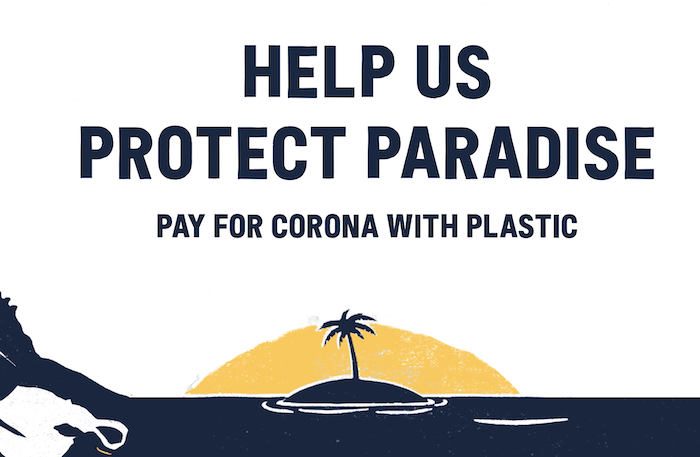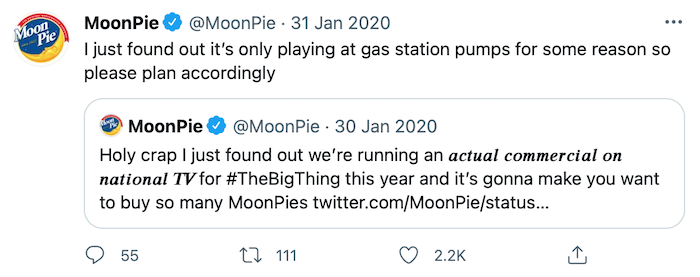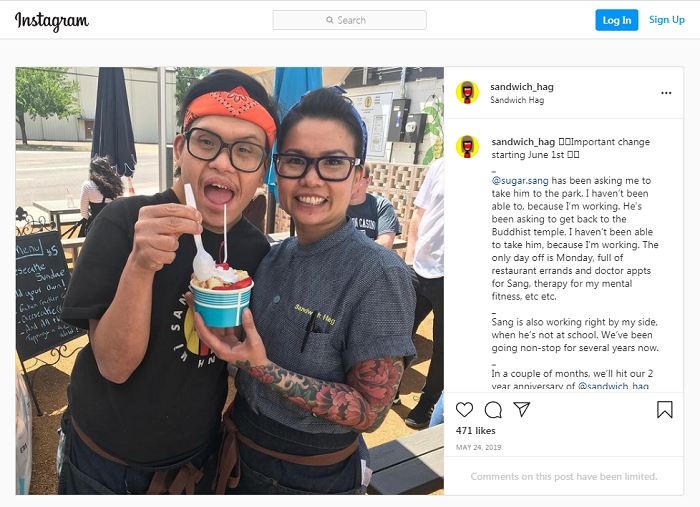
These Tactical Black Friday Ad Campaign Tips Can Increase Your Revenue 200%
There’s no better time than the Black Friday season to boost your sales. From product launches to store-wide promotions, businesses ramp up their sales and marketing efforts during this time to match the high customer demand.
Not sure where to start? Black Friday ad campaigns are one of the quickest way to drive revenue.
Do Black Friday Ad Campaigns Make a Difference?
Don’t dismiss Black Friday as just another e-commerce trend. Shoppers still spend as much as $9 billion on Black Friday deals in a given year. You can leverage this audience interest to improve your revenue by using effective Black Friday ad campaigns.
Here’s how.
Top 8 Black Friday Ad Campaign Tips
Follow these simple yet powerful strategies to build successful Black Friday ad campaigns.
1. Make Your Sales Specials Clear
How would people buy from you if they don’t know what you’re selling?
If you’re launching a Black Friday ad campaign, make your offers clear. For example, look at this ad by First Hotels.

The first word makes it clear what the offer is about. Then, the rest of the ad copy is written in simple language to draw attention to the Black Friday ad.
Here is another example from the Clash of Clans Twitter account.

How do you make sure your Black Friday ad campaign makes your offers clear and attractive?
- Add the words Black Friday in a large, eye-catchy font.
- Make it easy to understand with simple ad copy like in the Clash of Clans image.
- Use striking visuals, animations, and popping elements to draw attention.
2. Research Which Platforms to Run Campaigns On
The best strategies for creating a Black Friday ad campaign vary from platform to platform. Research the popular ad campaign platforms beforehand to make the most out of your time, money, and efforts.
This way, you’ll know which platforms work best for your audience and for the type of content you want to post. It’ll also help you tailor your marketing strategies to the unique features offered by the platform.
For instance, here are some points you need to consider:
- Do you want your Black Friday ad campaign to be visually engaging? Then use social media platforms like Instagram. This can be great for fashion and food brands.
- Do you want to hold the audience’s attention via engaging text? Then use social media platforms like Twitter and LinkedIn. This can be great for magazines, SEO services, and other text-focused businesses.
- Do you want to create an ad campaign with both text and images? Then use social media platforms like Facebook. This can be great for most industries, from small home-based business owners to worldwide franchise businesses.
Your marketing (or ad spend) budget should also be a major consideration when deciding which platform you’ll use for your Black Friday ad campaign.
I recommend comparing the prices of all social media and advertising platforms to see how much money you would need to get similar results on different platforms.
Not all results are replicable, but this will give you a rough idea of which platform can help you take your dollar the farthest.
3. Start Early to Benefit More
Don’t wait for the last day to launch your Black Friday ad campaign. Ad campaign fees can be higher during the holiday season, so it’s best to up your marketing game early on.
Here’s why it helps:
- You can launch effective ad campaigns before your competition when there’s little to no bidding for similar products and services.
- You save money by buying ads when they’re relatively cheaper.
- You generate audience interest which can boost sales when your offers go live.
What’s the best way to start early?
First, plan what your Black Friday ads should contain well in advance. Use audience analysis (more on that below) to refine your plan further.
Second, use words like “upcoming,” “soon,” and “stay tuned” to build excitement and interest. Audience research is essential here too. If you’ve tried A/B testing with your frequent customers before, you’ll have the data to make informed decisions about the word choice and structure.
Finally, set an early launch date. Start your Black Friday ad campaign a few days before the average business would so you can leverage the lower competition time and attract audience attention.
Many businesses typically start advertising their Black Friday deals about a week in advance. However, I recommend considering the period around the first week of November to launch your Black Friday ad campaign.
4. Cash in on Cyber Monday
“BFCM” is a trending term around the Black Friday season. It stands for Black Friday Cyber Monday and refers to the time between the two days when most e-commerce stores offer massive deals.
Here’s an example of a Black Friday Cyber Monday ad by Pololu.

This strategy works because the audience is already in a shopping mode during this season, and receiving combined ads can help increase e-commerce interest.
Here are some things to keep in mind when designing a BFCM ad:
- Highlight both Black Friday and Cyber Monday in your ad copy.
- Keep the ad copy clear. Don’t clutter it with too much content and colors.
- Make your offers clear. Are you offering discounts, deals, free trials, etc.?
5. Understand Your Audience
You can design the best Black Friday ad, but if it isn’t tailored to your audience, it’s not going to be very useful.
Think about it: You don’t want to show a bicycle ad to someone who only travels by car.
For instance, data shows Millennials spent the most money on Black Friday deals. It might be more effective to market your products and services to this demographic if relevant to your business model.
Here are some tips that will help you understand your audience and craft a compelling ad copy:
- Get hyper-specific about your target customer. What do they like and dislike? What gets their attention?
- Create a buyer persona to make sure you’re looking at the complete picture. You can use HubSpot’s Make My Persona tool to do this more effectively.
- Get direct customer feedback through surveys and feedback forms. Here’s a simple but effective example from QuickTapSurvey.

- Experiment with different wording to see what best resonates with your audience. Switch up the pronouns from “you” to “we” and vice versa. You can also try using completely different copy to see what works well, which brings me to the next point:
- Try A/B testing with graphics, images, and headlines. A/B testing will give you live feedback on whether your strategies are working or not. It’ll also help you pinpoint the areas where your Black Friday ad campaign is lacking and how to improve it.
6. Target Your Ad Campaigns
Now that you understand your audience, it’s time to make sure your Black Friday ads are targeted to them.
Social media platforms like Facebook can be helpful for this. For example, Facebook offers a wide selection of targeting and retargeting options so you can truly narrow down the customers you want to reach.

Refer to your buyer persona and create specific ad campaigns to appeal to your target buyer. This will ensure you are reaching the right people without wasting a lot of money.
7. Offer Options to Recover Abandoned Carts
Often people will visit your e-commerce store, browse through your products, maybe add a few to the cart, but leave without buying. Research shows e-commerce brands lose $18 billion in sales revenue each year because of abandoned carts.
You can offer options to recover abandoned carts. Here’s how:
Understand and Change
First, start by understanding why people are abandoning the process midway. For example, is it the shipping fees? If so, can you offer discounted or free shipping for Black Friday?
Offer Better Deals
Sometimes customers want to buy the product, but they want to check out competitor products or simply wait for a discount. As an e-commerce business owner, you can use this to your advantage by offering Black Friday discounts and exclusive deals to such customers.
For example, look at the abandoned cart recovery email below, shared by TargetBay.

Emails like this serve three primary purposes:
- It reminds customers to complete the transaction if they’ve forgotten it while browsing.
- It establishes a sense of trust and loyalty because you’re sending targeted offers right into their inbox.
- It gives you an edge over competitors who aren’t offering such deals.
8. Don’t Forget Basic Ad Campaign Optimization
Sometimes, in a quest to create a highly effective ad copy, marketers tend to overlook the basic ad campaign optimization strategies. Don’t be one of them.
To ensure you get the best results from your Black Friday ad campaign, be mindful of the nitty-gritty details. To make this easier, keep the following checklist handy:
- Budget: What’s your budget for the Black Friday ad campaign? How can you effectively distribute it across different advertising and social media platforms?
- Copy: Is your copy clear and easy to understand? Double and triple-check for spelling and grammar mistakes.
- Platform features: Are you using all the relevant marketing features the platform you chose has to offer? For example, are you using the right targeting tools on Facebook? Is your Instagram ad campaign visually appealing?
- Platform limits: Be careful about the platform limits like word count, number of characters visible, image display, and page position. This can mess up how your ad is seen if not done right.
Black Friday Ad Campaign Frequently Asked Questions
Here are some of the most frequently asked questions about Black Friday Ad Campaigns.
Is building a Black Friday marketing plan a good idea?
Yes, Black Friday marketing is essential. E-commerce shoppers collectively spend billions during the Black Friday season, making it one of the most lucrative times to up your marketing game.
How should I pick the keywords I target for my Black Friday tactical ad campaigns?
To pick the right keywords for your Black Friday ad campaign, you can use keyword research tools like Ubersuggest, Ahrefs, and Moz. Studying your audience’s needs and consumption habits can also help you understand which Black Friday ad keywords will and won’t resonate.
When should my Black Friday ad campaign start?
If you want to make the most out of your marketing efforts, I recommend beginning early. Start teasing and promoting your offers at the beginning of November to build curiosity and excitement. Plus, it’s cheaper than starting closer to the event.
What are the top tips for ad campaigns for Black Friday 2021?
The top tips for ad campaigns for Black Friday 2021 include audience research, using targeting and retargeting techniques, cashing in on the Cyber Monday sales, and offering abandoned cart recovery deals.
{
“@context”: “https://schema.org”,
“@type”: “FAQPage”,
“mainEntity”: [
{
“@type”: “Question”,
“name”: “Is building a Black Friday marketing plan a good idea? “,
“acceptedAnswer”: {
“@type”: “Answer”,
“text”: ”
Yes, Black Friday marketing is essential. E-commerce shoppers collectively spend billions during the Black Friday season, making it one of the most lucrative times to up your marketing game.
”
}
}
, {
“@type”: “Question”,
“name”: “How should I pick the keywords I target for my Black Friday tactical ad campaigns?”,
“acceptedAnswer”: {
“@type”: “Answer”,
“text”: ”
To pick the right keywords for your Black Friday ad campaign, you can use keyword research tools like Ubersuggest, Ahrefs, and Moz. Studying your audience’s needs and consumption habits can also help you understand which Black Friday ad keywords will and won’t resonate.
”
}
}
, {
“@type”: “Question”,
“name”: “When should my Black Friday ad campaign start?”,
“acceptedAnswer”: {
“@type”: “Answer”,
“text”: ”
If you want to make the most out of your marketing efforts, I recommend beginning early. Start teasing and promoting your offers at the beginning of November to build curiosity and excitement. Plus, it’s cheaper than starting closer to the event.
”
}
}
, {
“@type”: “Question”,
“name”: “What are the top tips for ad campaigns for Black Friday 2021?”,
“acceptedAnswer”: {
“@type”: “Answer”,
“text”: ”
The top tips for ad campaigns for Black Friday 2021 include audience research, using targeting and retargeting techniques, cashing in on the Cyber Monday sales, and offering abandoned cart recovery deals.
”
}
}
]
}
Tactical Black Friday Ad Campaign Tips Conclusion
Black Friday can be a huge opportunity to attract customer attention, build brand awareness and boost revenue.
It may sound a little intimidating at first, considering the scale of the event, but I hope the tips above help you outline an effective Black Friday ad campaign strategy.
If you’d like to learn more about audience research and ad targeting, check out my guides to find your target audience and powerful ways to improve your Facebook targeting.
Which strategy would you like to start with to ramp up your Black Friday ad campaign efforts?




































